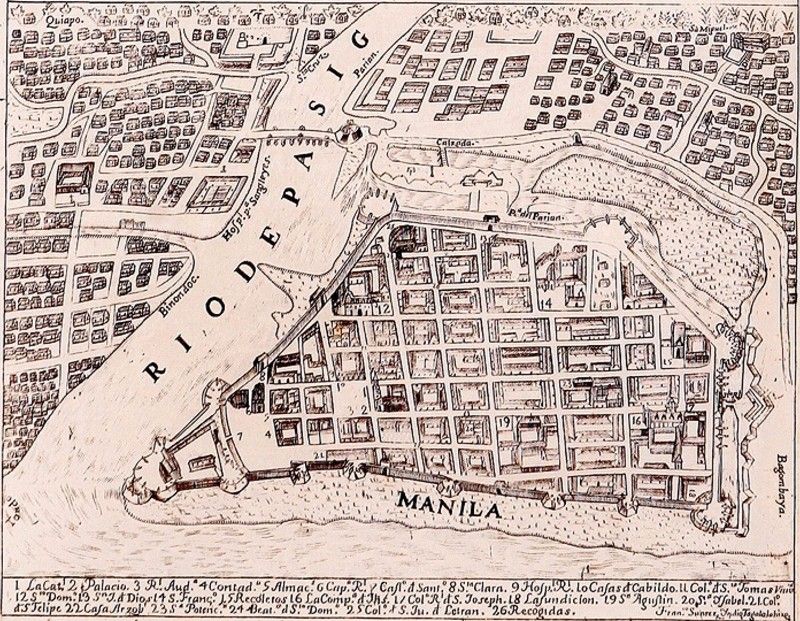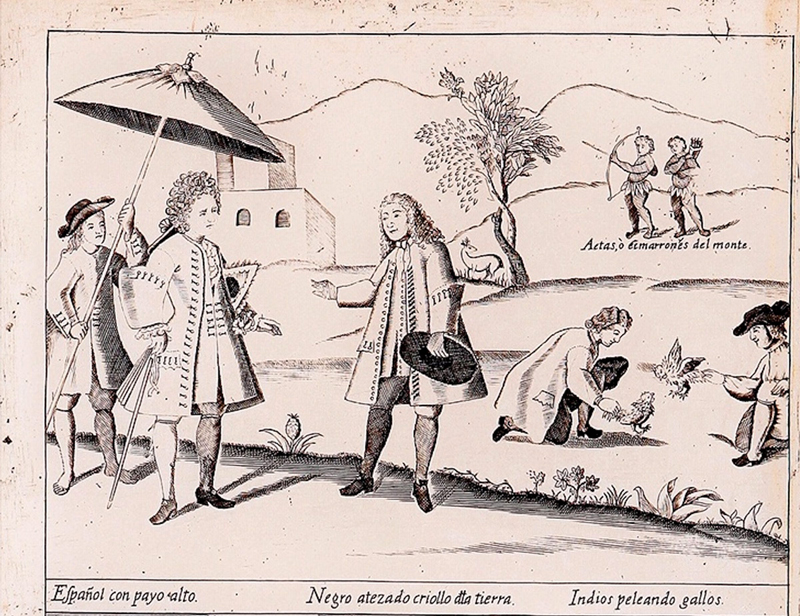Yorme’s Manila


Maynila is said to date back to the 13th century. It’s not the oldest capital in Asia but is certainly several centuries older than its sisters in North and South America. In 1571, the Spanish conquistador Miguel Lopez de Legazpi co-opted that name and established the city officially.
Over a century and a half later, the city was brimming with all kinds of inhabitants who are depicted in 12 astonishing vignettes that festoon the Murillo Velarde Map of 1734. It’s the “Holy Grail” of Philippine maps, its most legendary and certainly its most celebrated. (If you have a yen for history, you must pay a visit to León Gallery to view this marvel before it goes on the block at the “Magnificent September” auction on Saturday. There’s no small irony here that it will take place on the street named after the Spanish founder of Manila.)
In the map are depicted “Kaffirs” (Africans dancing a jig and wearing bells on their ankles, possibly the origin of the mythical giants “kapre”); “Lascar” (Indian mariners); “Mardicans” (Moluccans of Ternate who were captured and made to settle in Cavite, giving the name of their old town to their new home); Armenians and Persians (puffing on a waterpipe); Japanese, Chinese, Spanish, “negritos” and “indios,” as well as “mestizos.” It could be a microcosm of Manila today, with its invasion of mainlanders, Iranian dental students, Korean beauty salons and shawarma shops. One wonders if the put-upon natives then were as baffled and insecure as we are today.
Just as Yorme Isko Moreno does not suffer fools gladly, Fr. Pedro Murillo Velarde did not take too kindly to Manila’s ruling classes. He instructed the “Indio Tagalo” artists laboring under him — by the names of Nicolas de la Cruz Bagay and Francisco Suarez — to draw caricatures of his least-favorite Spanish official, dressed as a fop in wig and lace cuffs, preening under a parasol. There is also a “criollo” (creole, half-European, half-black because everyone seemed to be black as far as Murillo Velarde was concerned), dressed in heavy, dark stockings and carrying a broad-brimmed European hat, intended to make him look over-dressed and under-rated. (They would be the equivalent of Yorme’s corrupt citizens, “Eddie” and “Patty.”)

“Eddie” and “Patty” in 1734: Murillo Velarde’s hated officials
They teem in places familiar to us all, Quiapo, Malate, Sta. Cruz and San Miguel, “La Hermita” (for Ermita), even Parañaque, across the bay from the fort of Cavite.
A quarter of a century later, Filipino artists are still fascinated by “the noble and ever loyal city” of the Spanish kings. Some of these memorable paintings are also featured in the same upcoming León Gallery auction on Sept. 14.
Chief of these is a stunning work by Alfredo Esquillo Jr. titled “Eksit sa Itaas,” which probably references Sartre’s absurd No Exit. In it a pied-piper, in the kind of footwear favored by surfers, presides over a chaotic maze that includes religious icons and gasmask-wearing families. “Eksit sa Itaas,” from a distinguished private collection, is also one of “Eski’s” most famous, if not, most exhibited, work. (He had just been celebrated last year with a major retrospective at the influential Ateneo Art Gallery.)
Also riveting, a work by Danilo Dalena called “Naninilip,” which immortalizes a favorite Manila pastime of the “Uzi,” short for “usiseros.” (Or could they be a row of peeping toms?)
Emmanuel Garibay’s “Kaganapan” portrays the daily, instantly recognizable torment of the Manila commute as a neon Calvary. A jeepney driver hands over the change with a palm adorned with stigmata, while a figure hanging on to rails mimics the suffering of Christ on the cross.
“Alay sa Poon” by Jehu Bitancor captures the cinematic drama and action of Manila’s most well-known religious feast.
Finally, a majestic 1947 piece by the venerable Irineo L. Miranda, a contemporary and fellow illustrator of Fernando Amorsolo, bears the title “The March of Progress.” It’s everything Yorme (and the rest of us, for that matter) want Manila to be: a fertile heaven of both peace and prosperity.



















